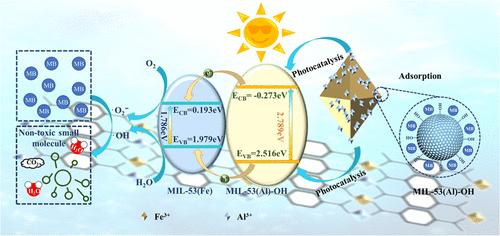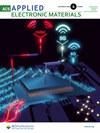Constructing of Core–Satellite Structure Bimetallic MOFs for Synergistic Enhanced Adsorption–Photocatalytic Degradation
IF 4.3
3区 材料科学
Q1 ENGINEERING, ELECTRICAL & ELECTRONIC
引用次数: 0
Abstract
Various industries generate a large amount of wastewater, which contains soluble organic compounds that can seriously jeopardize the environment and human health. Therefore, new photocatalytic materials with the function of efficiently degrading pollutants have become a research hotspot. In this research, bimetallic metal–organic frameworks (MOFs) with a core–satellite structure were prepared through a simple one-pot method in the presence of a polyvinylpyrrolidone structure-directing agent and crystal size. Also, the synergy of the adsorption–catalytic properties of the core–satellite structure bimetallic MOFs was achieved via the interaction of aluminum and iron groups. Meanwhile, the type I heterojunction structure based on MIL-53(Al@Fe)–OH realized the effective separation of the photogenerated carriers. Under the synergistic adsorption–catalytic degradation, the degradation efficiency of methylene blue (MB) was nearly 100% after adsorption (of 2 h) and photocatalysis (of 2 h), and the removal rate of MB still reached 90.43% after five cycles. This study provides a new strategy for the construction of bimetallic MOF structures for efficient adsorption-catalyzed degradation of environmental pollutants.

构建核心-卫星结构双金属 MOFs 以协同增强吸附-光催化降解能力
各行各业都会产生大量废水,其中含有的可溶性有机化合物会严重危害环境和人类健康。因此,具有高效降解污染物功能的新型光催化材料成为研究热点。本研究在聚乙烯吡咯烷酮结构导向剂和晶体尺寸的作用下,通过简单的一锅法制备了具有核心-卫星结构的双金属金属有机框架(MOFs)。同时,通过铝基和铁基的相互作用,实现了核卫星结构双金属 MOFs 吸附催化性能的协同。同时,基于 MIL-53(Al@Fe)-OH 的 I 型异质结结构实现了光生载流子的有效分离。在吸附-催化协同降解条件下,经过吸附(2 h)和光催化(2 h)后,亚甲基蓝(MB)的降解效率接近100%,5次循环后MB的去除率仍达到90.43%。该研究为构建双金属 MOF 结构以高效吸附催化降解环境污染物提供了一种新策略。
本文章由计算机程序翻译,如有差异,请以英文原文为准。
求助全文
约1分钟内获得全文
求助全文

 求助内容:
求助内容: 应助结果提醒方式:
应助结果提醒方式:


